Key takeaways:
- Mastering CSS Flexbox and Grid techniques significantly improved layout design, making it easier to create responsive and complex structures.
- Utilizing online resources such as MDN Web Docs, Codecademy, and community forums enhances understanding and provides practical learning experiences.
- Overcoming challenges like specificity and responsive design is crucial for a successful CSS journey, emphasizing the importance of debugging and using media queries effectively.
- Continuous growth in CSS requires staying updated with trends, experimenting with personal projects, and engaging with a supportive community.
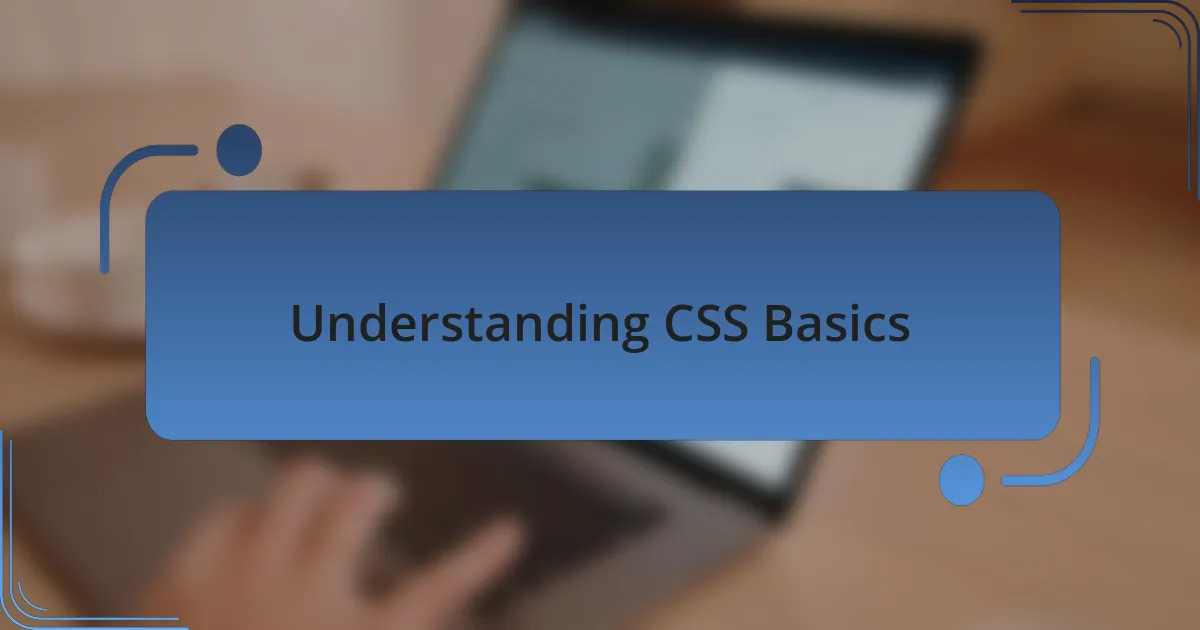
Understanding CSS Basics
One of the thrilling aspects of diving into CSS basics is grasping how it styles HTML content. I remember staring at a plain webpage, wishing it looked more appealing. Once I learned CSS, transforming that bland layout into something vibrant felt like wielding a magic wand. I found joy in adjusting margins, colors, and fonts, breathing life into my designs.
As I delved deeper into CSS, I discovered the concept of the box model, which is foundational for web design. It took me a while to understand that every element on a page is a box, with content, padding, borders, and margins. Have you ever tried to adjust an element’s space, only to find it didn’t move as expected? That was a common struggle for me until I began really visualizing how these components interacted.
I can’t stress enough the importance of mastering selectors. Initially, I thought selecting elements was straightforward, but it’s more nuanced than it appears. There’s a sort of satisfaction in using class selectors, ID selectors, and pseudo-classes effectively. It feels rewarding to see how a few lines of CSS can drastically change the layout or behavior of elements on the page, doesn’t it? Each new concept, like selectors or properties, offers a small victory, making the learning journey all the more enjoyable.
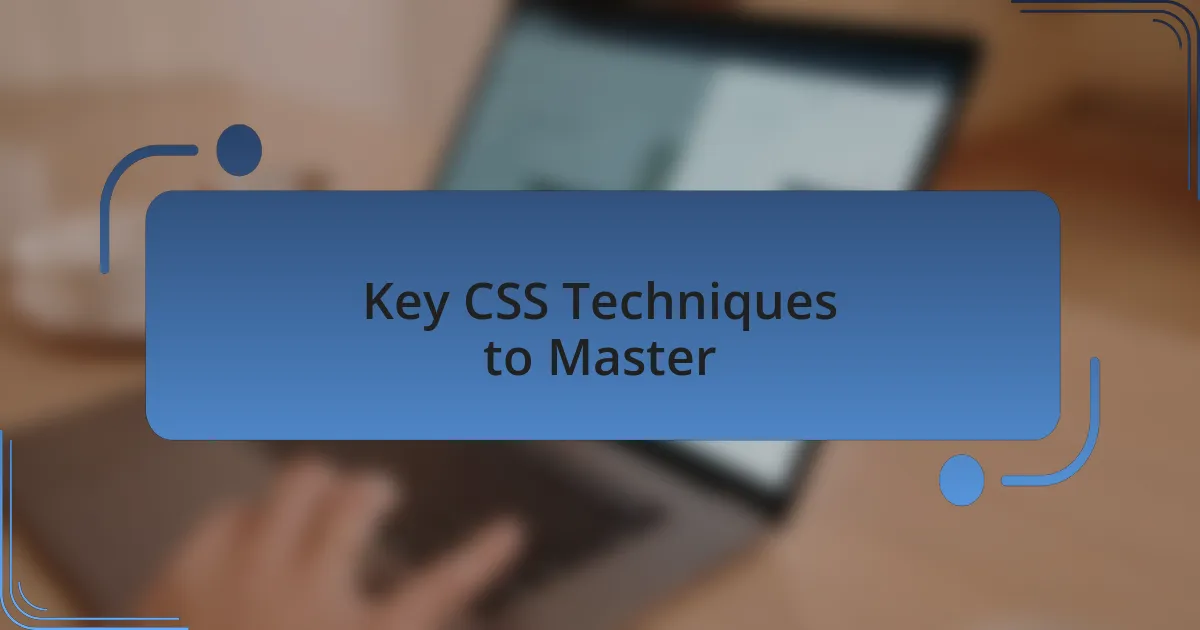
Key CSS Techniques to Master
One key technique I found invaluable was mastering CSS Flexbox. Initially, I wrestled with layouts, often feeling like a juggler trying to balance elements across the screen. Once I grasped Flexbox, it was like having a reliable partner in crime. I could achieve complex designs with ease—centering items, distributing space, and responding to screen size changes became intuitive. Have you ever felt that rush when everything aligns perfectly? That’s the power of Flexbox in action.
Another vital area to focus on is CSS Grid, which truly revolutionized how I approached layout design. I remember feeling overwhelmed when faced with intricate grid structures, but once I took the time to understand its syntax, everything clicked. It felt liberating to create responsive layouts without excessive media queries. If you’ve ever faced the limits of Flexbox, Grid opens up a whole new world of possibilities, allowing for precise control of both rows and columns, which is something I thoroughly enjoyed exploring.
Lastly, I can’t overlook the significance of CSS animations. When I first stumbled upon transitions and keyframes, the excitement was palpable. I lovingly remember the satisfaction of transforming a static button into one that glowed and shifted on hover, inviting users to click. Have you ever witnessed how little details can enhance user experience? It’s these animated touches that breathe life into a webpage, making designs memorable and engaging in ways that static elements simply cannot achieve.
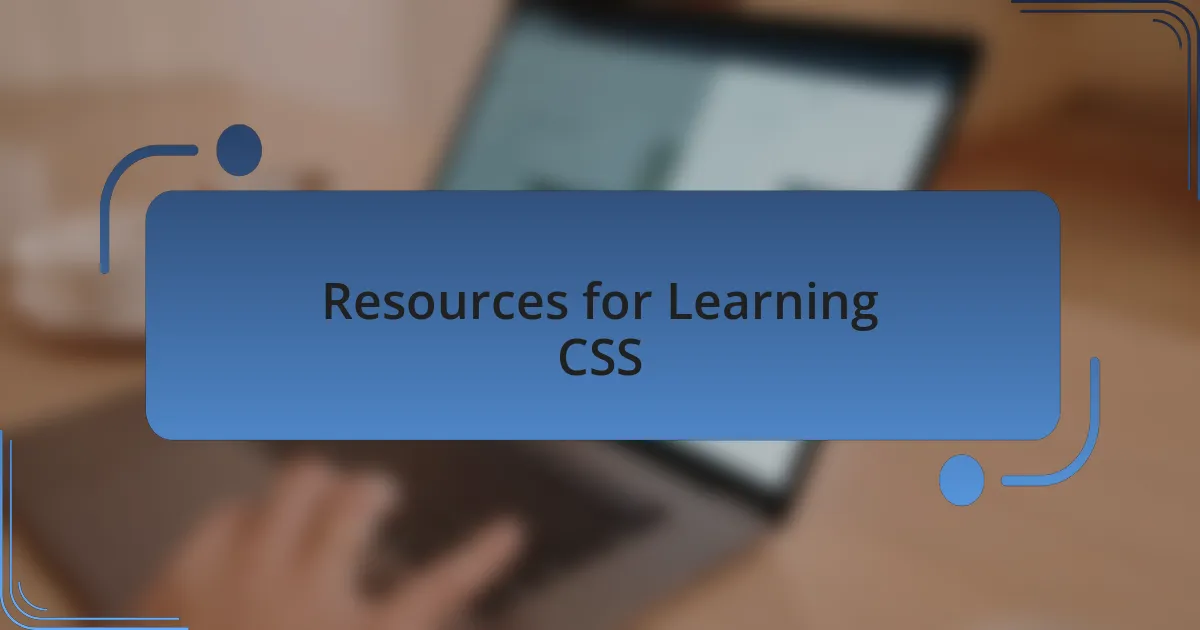
Resources for Learning CSS
When I was looking to enhance my CSS skills, I stumbled upon several amazing online resources that completely changed my approach. Sites like MDN Web Docs have become my go-to for comprehensive documentation; it’s like having a CSS encyclopedia at my fingertips. Just diving into their guides, I found clarifications on properties that I had previously misunderstood. Have you ever had a moment when everything just clicked because of the right resource?
Another treasure trove for me has been Codecademy. Their interactive learning platform allows you to practice CSS in real time. I’ll never forget the thrill of my first project: a beautifully styled navbar that came together after just a few lessons. Engaging with a real-time editor transformed my learning experience, and I felt a deep sense of accomplishment every time I completed a mini-challenge. Have you experienced that moment when hands-on practice makes theory come alive?
Lastly, I can’t recommend enough the power of community-driven resources like CSS-Tricks and Stack Overflow. These platforms not only have articles and tutorials, but also vibrant forums where I learned from real developers sharing their journeys. I once posted a question about a CSS problem that had me stumped for days, and within hours, I received insightful suggestions that not only solved my issue but opened my eyes to new techniques. Isn’t it inspiring to be part of a community that lifts each other up?
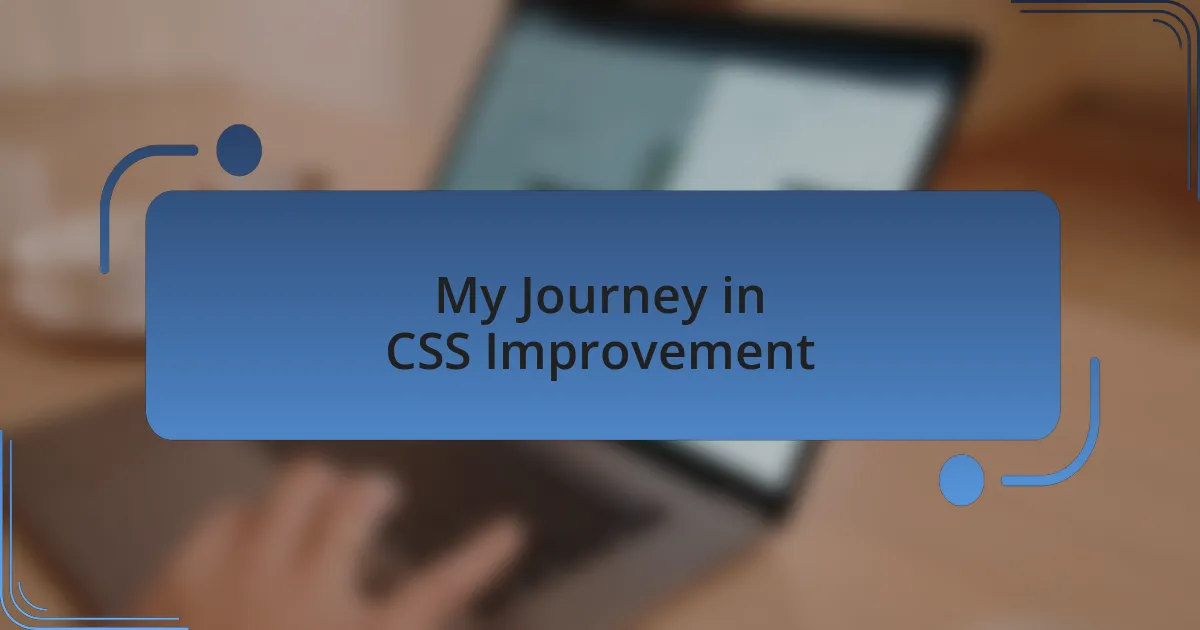
My Journey in CSS Improvement
My journey in CSS improvement has been a rollercoaster of discovery and frustration. I vividly remember sitting in front of my computer, staring blankly at a stylesheet I had been working on. It felt like I was trying to decode a secret language. Then, one day, after hours of trial and error, I finally grasped the concept of flexbox. Suddenly, my designs began to take on a professional polish I had only dreamed of before. Does anyone else remember that exhilarating moment when a complex concept just clicks?
As I dove deeper, experimentation became my best friend. I decided to create a personal project—a portfolio website to showcase my work. Each new section was an opportunity to test out different CSS techniques. I recall struggling with hover effects, only to have a lightbulb moment when I discovered transitions. The satisfaction of seeing elements animate smoothly across my screen was nothing short of inspiring. Have you ever found a simple trick that turned your work into something magical?
Collaboration has also played a crucial role in my growth. I began attending local meetups where I found myself surrounded by fellow developers, each with their unique approach to CSS. One particular night, I watched as a peer effortlessly debugged an issue I had not been able to solve for weeks. It reminded me of the importance of sharing knowledge and being open to new perspectives. How many times have you gained a fresh insight simply by engaging with others in the field?
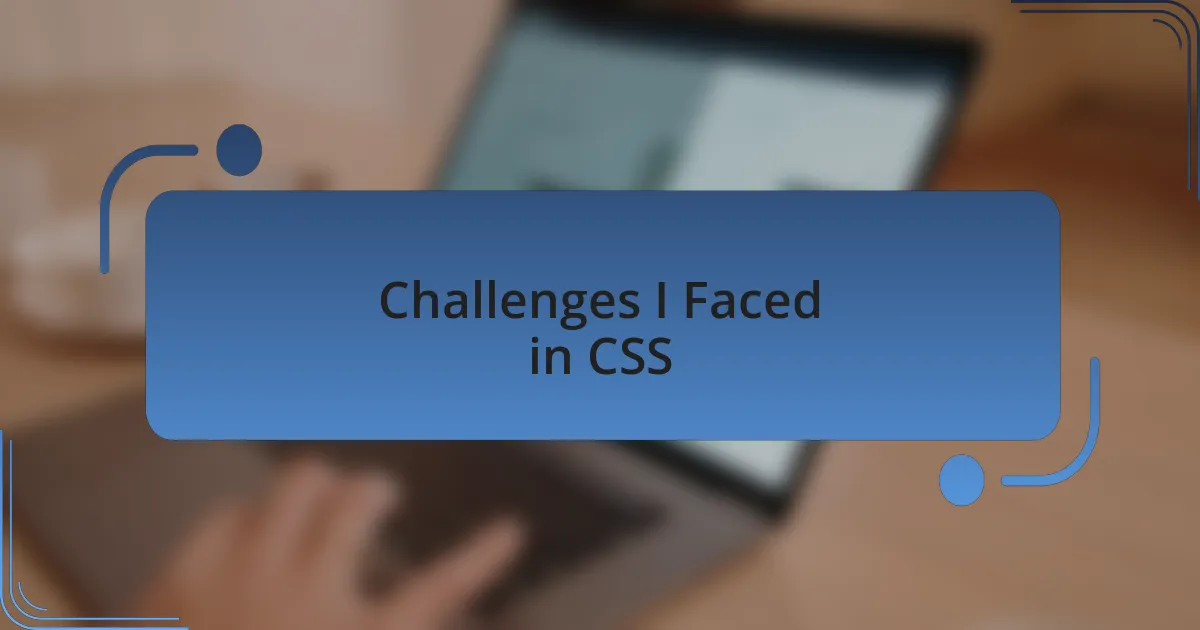
Challenges I Faced in CSS
One of the main challenges I faced in CSS was understanding the cascading nature of styles. Initially, I found myself frustrated when changes wouldn’t appear as I expected. There were moments when I would forget that rules could be overridden by later declarations, leading to hours spent searching for that elusive missing style. Have you ever spent more time than you’d like simply debugging a stylesheet? It can feel like searching for a needle in a haystack.
Another hurdle was responsive design. I can clearly remember the stress of making a layout look good on both desktop and mobile. My first attempts resulted in elements that were either too large or completely misplaced on smaller screens. The realization that media queries were my best allies was a game-changer. Isn’t it amazing how one tool can transform your entire approach to design?
Lastly, mastering specificity was another steep hill to climb. I often found myself confused about why certain styles wouldn’t apply, only to learn that I was misusing selectors. I vividly remember the lightbulb moment when I started to separate classes and IDs properly, leading to cleaner, more manageable code. Have you ever felt like you were juggling too many elements at once? Finding that balance in specificity made all the difference for me.
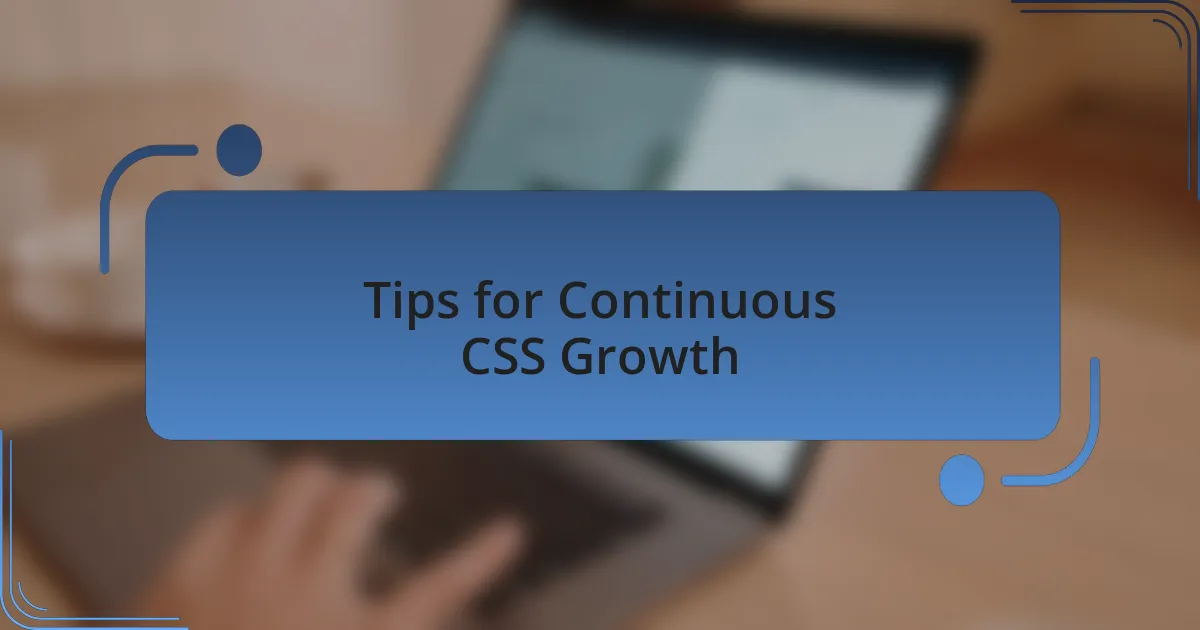
Tips for Continuous CSS Growth
Staying updated with CSS trends and techniques is essential for continuous growth. I remember setting aside time each week to browse through articles and tutorials, which not only sharpened my skills but also kept my enthusiasm alive. Have you ever stumbled upon a new method that changed everything for you? That thrill of discovery can really fuel your passion for web design.
Additionally, experimenting with small projects can be incredibly beneficial. When I started creating mini web designs solely for practice, I found myself trying out new styles and layouts without the pressure of client expectations. This process was not only enjoyable but also helped solidify my knowledge through hands-on experience. How often do you give yourself permission to play with code just for the fun of it?
Joining a community can also enhance your learning journey. I recall signing up for a local web design meetup and instantly feeling inspired as I connected with others who shared my struggles and triumphs. Engaging in discussions or attending workshops creates an environment ripe for growth—it’s amazing how a simple conversation can spark new ideas. Have you ever felt the power of community support? It truly can make a world of difference.